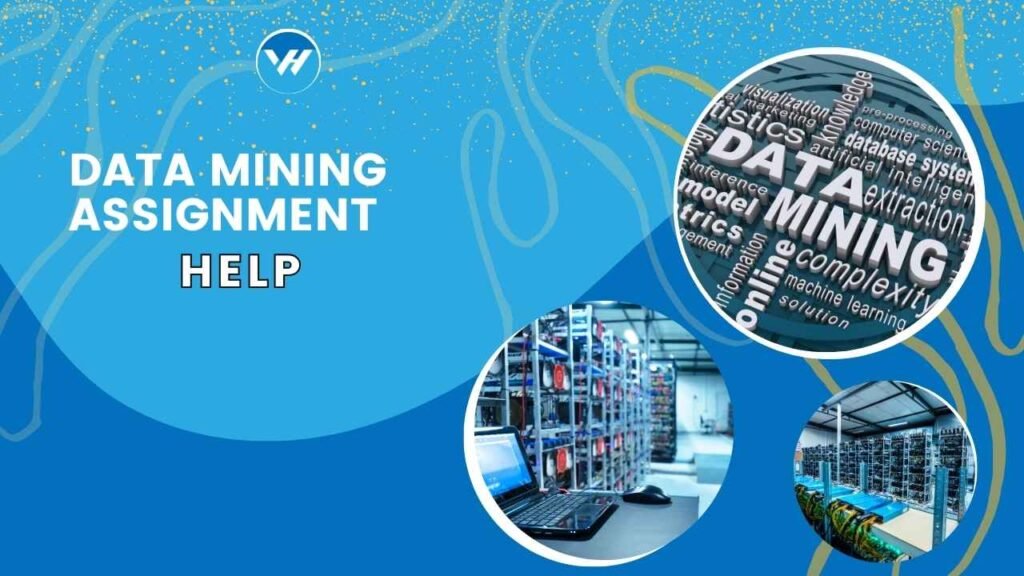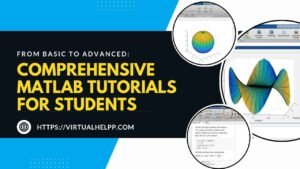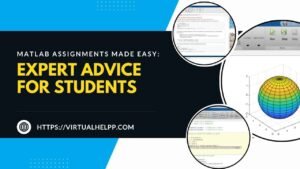Data mining is like digging for gold, but instead of sifting through dirt, you’re sifting through data. In today’s data-driven world, data mining is crucial for businesses and organizations to turn raw data into useful information. However, many students find data mining assignments challenging due to their complexity. This article will guide you through the intricacies of data mining and how Virtual Help can make your academic journey smoother.

Table of Contents
ToggleUnderstanding Data Mining
Definition and Concepts
Data mining involves extracting valuable information from large datasets to identify patterns, correlations, and trends. It’s a process that combines statistics, machine learning, and database systems.
History and Evolution of Data Mining
The concept of data mining has evolved over the decades, starting from simple data collection and storage to advanced techniques like machine learning and artificial intelligence.
Key Techniques Used in Data Mining
Some common techniques include classification, clustering, regression, and association rule learning. These techniques help in making predictions, identifying groupings, and discovering relationships in data.
Applications of Data Mining
Business Intelligence
Data mining helps businesses understand customer behavior, forecast trends, and improve decision-making processes.
Healthcare
In healthcare, data mining is used for patient diagnosis, treatment optimization, and predicting disease outbreaks.
Retail and E-commerce
Retailers use data mining to personalize marketing campaigns, manage inventory, and enhance customer experience.
Financial Services
Banks and financial institutions use data mining for credit scoring, fraud detection, and risk management.
Telecommunications
Telecom companies leverage data mining for customer segmentation, churn prediction, and optimizing network performance.
Common Data Mining Algorithms
Classification Algorithms
Decision Trees
Decision trees are used to create a model that predicts the value of a target variable based on several input variables.
Random Forest
Random Forest is an ensemble learning method that operates by constructing multiple decision trees.
Naive Bayes
Naive Bayes is a simple yet powerful algorithm based on Bayes’ theorem with strong assumptions of independence.
Clustering Algorithms
K-means Clustering
K-means clustering partitions data into K distinct clusters based on the mean values of the data points.
Hierarchical Clustering
Hierarchical clustering builds a hierarchy of clusters either by merging or splitting them successively.
Association Rule Learning
Apriori Algorithm
Apriori is used for mining frequent itemsets and relevant association rules.
Eclat Algorithm
Eclat (Equivalence Class Clustering and bottom-up Lattice Traversal) is an efficient algorithm for mining frequent itemsets.
Anomaly Detection Algorithms
These algorithms are used to identify rare items, events, or observations that differ significantly from the majority of the data.
Tools and Software for Data Mining
Popular Data Mining Tools
WEKA
WEKA is a collection of machine learning algorithms for data mining tasks.
RapidMiner
RapidMiner provides an integrated environment for machine learning, data mining, and predictive analytics.
KNIME
KNIME (Konstanz Information Miner) is an open-source data analytics, reporting, and integration platform.
Apache Mahout
Apache Mahout is a library of scalable machine learning algorithms.
Comparison of Tools
Each tool has its strengths and weaknesses. Choosing the right one depends on your specific needs and expertise.
Challenges in Data Mining Assignments
Data Preprocessing Issues
Data preprocessing is critical but can be challenging due to the need for cleaning, transforming, and integrating data from various sources.
Selection of Appropriate Algorithms
Choosing the right algorithm requires a deep understanding of the data and the problem at hand.
Handling Large Datasets
Managing and processing large datasets efficiently is a common challenge.
Interpreting Results
Interpreting the results accurately to make meaningful conclusions is crucial and often difficult.
Tips for Excelling in Data Mining Assignments
Understanding the Problem Statement
Clearly understanding what is required in the assignment is the first step towards success.
Effective Data Cleaning Techniques
Spend adequate time on cleaning and preprocessing data to ensure quality results.
Choosing the Right Algorithm
Select algorithms that are best suited for your data and the problem you are trying to solve.
Analyzing and Interpreting Data
Analyze the results carefully and interpret them in the context of your problem statement.
How Virtual Help Can Assist You
Overview of Virtual Help Services
Virtual Help provides a platform where students can find tutors and get assistance with their assignments through an iOS and Android app.
Benefits of Using Virtual Help
With Virtual Help, you get access to expert tutors, timely assistance, and resources tailored to your academic needs.
How to Get Started with Virtual Help
Download the Virtual Help app, sign up, and connect with tutors who specialize in data mining.
Conclusion
Data mining is a powerful tool in today’s digital age, offering insights and solutions across various industries. However, mastering data mining can be challenging for students. This is where Virtual Help comes in, providing the support and resources you need to excel. Whether you’re struggling with algorithms or interpreting data, Virtual Help is here to guide you every step of the way.
FAQs
What is Data Mining?
Data mining is the process of discovering patterns and knowledge from large amounts of data.
Why is Data Mining Important?
Data mining helps organizations make informed decisions by uncovering hidden patterns and trends.
What are the Main Challenges in Data Mining Assignments?
Challenges include data preprocessing, selecting appropriate algorithms, handling large datasets, and interpreting results.
How Can Virtual Help Improve My Data Mining Skills?
Virtual Help connects you with expert tutors who provide personalized assistance and resources to enhance your skills.
What Tools are Best for Data Mining?
Popular tools include WEKA, RapidMiner, KNIME, and Apache Mahout, each offering unique features for different needs.





